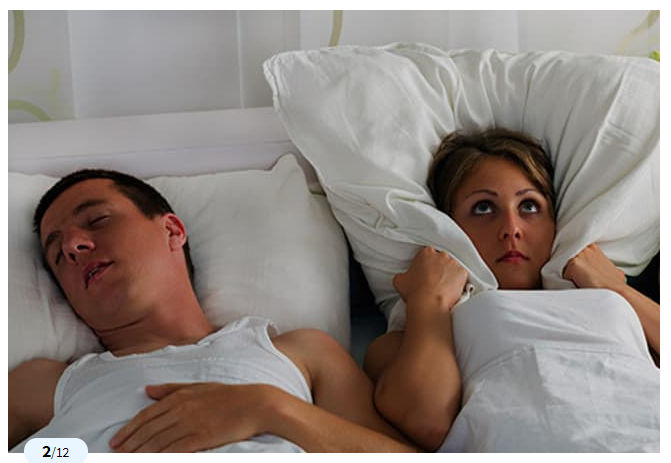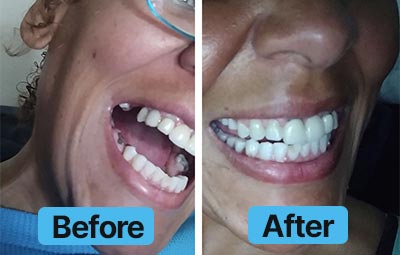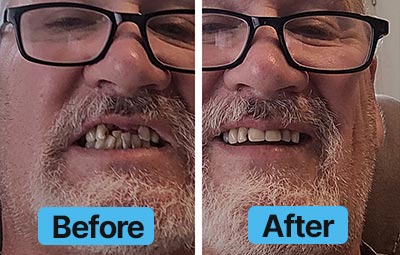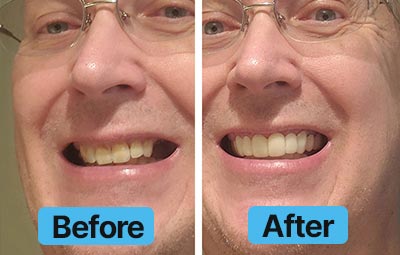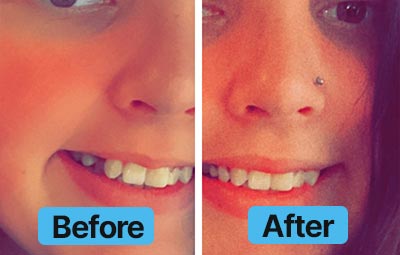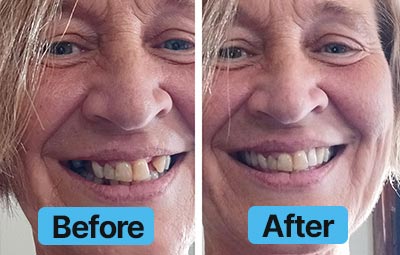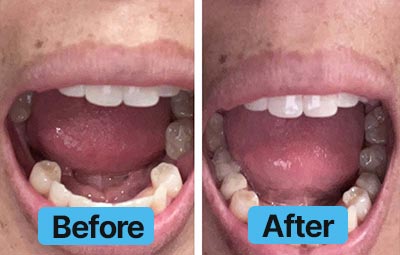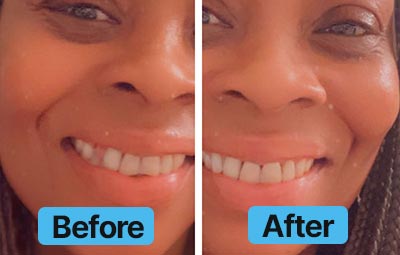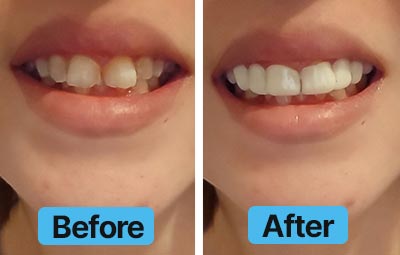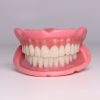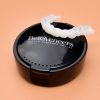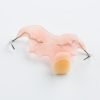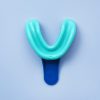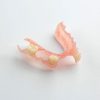For most people, snoring is an annoying habit that’s regarded as a nuisance but not viewed as a dangerous health risk. Other than a few complaints from a spouse or roommate, many people aren’t bothered by their snoring. But did you know that snoring negatively impacts your health if left untreated? For example, if snoring is a symptom of OSA (obstructive sleep apnea), you may not be getting enough oxygen during sleep and should see a doctor as soon as possible to determine the best course of treatment.
Luckily, there are a variety of effective anti-snoring treatments to help curb nighttime disturbances. Ever wondered how anti-snoring devices work? Here’s everything you need to know about the causes, symptoms, and treatments for snoring.
What Causes Snoring?
Snoring is caused when the soft tissues of the tongue, throat, or soft palate temporarily obstruct the airway while sleeping. As tissues relax, they fall into the airway and the vibrations cause an audible snoring sound. Not all people experience snoring, and risk factors include:
Anatomy
The anatomy of your mouth, neck, throat, tongue, and sinuses may severely impact your ability to breathe quietly while sleeping. Complications like a deviated septum or enlarged tonsils may block the airway more easily, causing an increase in the severity of snoring. Some individuals may struggle with obstructive sleep apnea caused by anatomical characteristics.
Alcohol Use
Chronic snoring goes hand-in-hand with excessive alcohol use. Since alcohol is a sedative, consuming large quantities before bed causes muscles to relax more than usual, and weakens your body’s natural responses to low oxygen levels. Overly relaxed head and neck muscles make snoring more likely when they block the airway during sleep.
Chronic Congestion
Individuals who struggle with allergies, asthma, sinus infections, or even common colds are all more likely to snore. This is because chronic congestion narrows the airways in the nose and mouth and makes it more difficult to breathe.
Sleep Position
Back sleepers beware! Certain sleeping positions contribute to snoring. In general, it’s better to sleep on your side since the airway isn’t as likely to be blocked.
What are the Symptoms of Snoring?
Snoring is sometimes tricky to diagnose since many snorers are totally oblivious to their nighttime habit. However, severe snoring does contribute to an array of symptoms including:
- Headaches, particularly in the morning.
- Sore throat upon waking.
- Intense daytime sleepiness.
- Trouble concentrating.
- Gasping for air during the night.
- High blood pressure.
If left untreated, conditions like OSA may lead to more severe complications like heart disease. If you are experiencing symptoms consistent with OSA, visit a doctor as soon as possible.
Diagnosis and Treatment Options
For severe snorers who might be suffering from OSA, most doctors will recommend a sleep study to monitor the quality of sleep the patient gets every night. This will determine whether or not the patient is experiencing frequent pauses in breathing and a lack of consistent oxygen flow.
There are many different ways to treat snoring depending on the root cause. Common treatments include:
- Upper airway surgery.
- CPAP machines.
- Lifestyle changes.
- Anti-snoring devices.
Treatments like upper airway surgery and CPAP machines are typically used in more extreme cases and are prescribed by a doctor. For mild sleep disturbance due to snoring, many patients use at-home remedies and simple anti-snoring devices to solve the problem.
How to Take Charge of Snoring at Home
Snoring doesn’t need to control your life. In fact, there are many ways to treat and minimize snoring from the comfort of your home.
Keep the Air Clean
Start by using an air purifier and humidifier in your bedroom. If you live in a dusty, dry location, it’s often helpful to provide your sinuses with some much-needed moisture. Air purifiers alleviate allergy symptoms that contribute to congestion and may cause snoring.
Use a Nasal Dilator
Nasal dilators expand the nostrils and allow more air to flow in and out of the nasal passages. The strip is placed on the outside of the nose and increases airflow. While nasal dilators are a great solution for some cases, they aren’t a suitable treatment for OSA.
Use an Anti-Snoring Device
Antisnoring devices are a great at-home treatment for chronic snorers. Anti-snoring devices are available in a variety of designs, so you can choose the most effective solution for your needs. MADs and tongue retainers are both great options to eliminate snoring while maintaining all-night comfort.
What are the Main Types of Anti-Snoring Devices?
Generally, anti-snoring devices come in two main categories: mandibular advancement devices (MADs) and tongue-retaining devices (TRDs).
Mandibular Advancement Devices
The most popular anti-snoring appliance is a mandibular advancement device. As the name suggests, these appliances work by gently advancing the lower jaw (mandible) thus repositioning the tongue and increasing the opening at the back of the throat. The device is designed to hold your jaw in place so the airway stays unobstructed all night long.
MADs look like mouth guards or retainers that fit over your teeth and slowly change the position of your jaw over time. MADs are available in custom-made and boil-and-bite varieties. Custom-made MADs are designed specifically to fit your mouth, making them the most comfortable choice and the best for your oral health. Most custom MADs are made using a mold of your teeth to sculpt the appliance. Boil and bite MADs are typically much more affordable, but maybe ill-fitting and lack durability over time.
Tongue Retaining Devices
Unlike mandibular advancement devices, TRDs don’t interfere with your teeth or jaw. For individuals who suffer from an enlarged tongue, or frequently sleep on their backs, TRDs may be the best solution. A TRD attaches to the tip of the tongue and holds the tongue in place during sleep. The idea is that the tongue can’t roll back into the airway since it’s secured at the front of the mouth by the TRD. TRDs offer great results for some patients, but due to the placement of the device in the mouth, TRDs aren’t as effective for individuals who like to sleep on their stomachs.
Improve Your Life by Eliminating Snoring
There’s no doubt that treating your snoring will lead to a healthier and happier life. Benefits of treatment include:
- Improved mood.
- Better attention-span.
- Increased energy.
- Stronger immune function.
- Improved sleep quality.
With all these benefits, it’s no wonder that folks are looking for snoring solutions. Here at Dental Lab Direct we offer custom-made anti-snoring devices conveniently delivered to your front door. Made from FDA-approved materials, these devices are designed to be safe and comfortable.
Dental Lab Direct’s 3-step ordering process makes getting your new device easy and hassle-free. Step one: order a Dental Lab Direct Dental Impression Kit in the mail. Step two: upon its arrival, complete the impression kit following the user-friendly instructions included with the kit. This should only take 10-15 minutes! Step three: mail the kit back to us using the prepaid postage label, then your new anti-snoring device should arrive in the mail in around three weeks. Why not take control of your health today? Contact Dental Lab Direct to get started and see how much a good night’s sleep can change your life.
 30 DAY warranty on all custom-made products | 1,000+ 5 Star ★★★★★ Reviews
30 DAY warranty on all custom-made products | 1,000+ 5 Star ★★★★★ Reviews